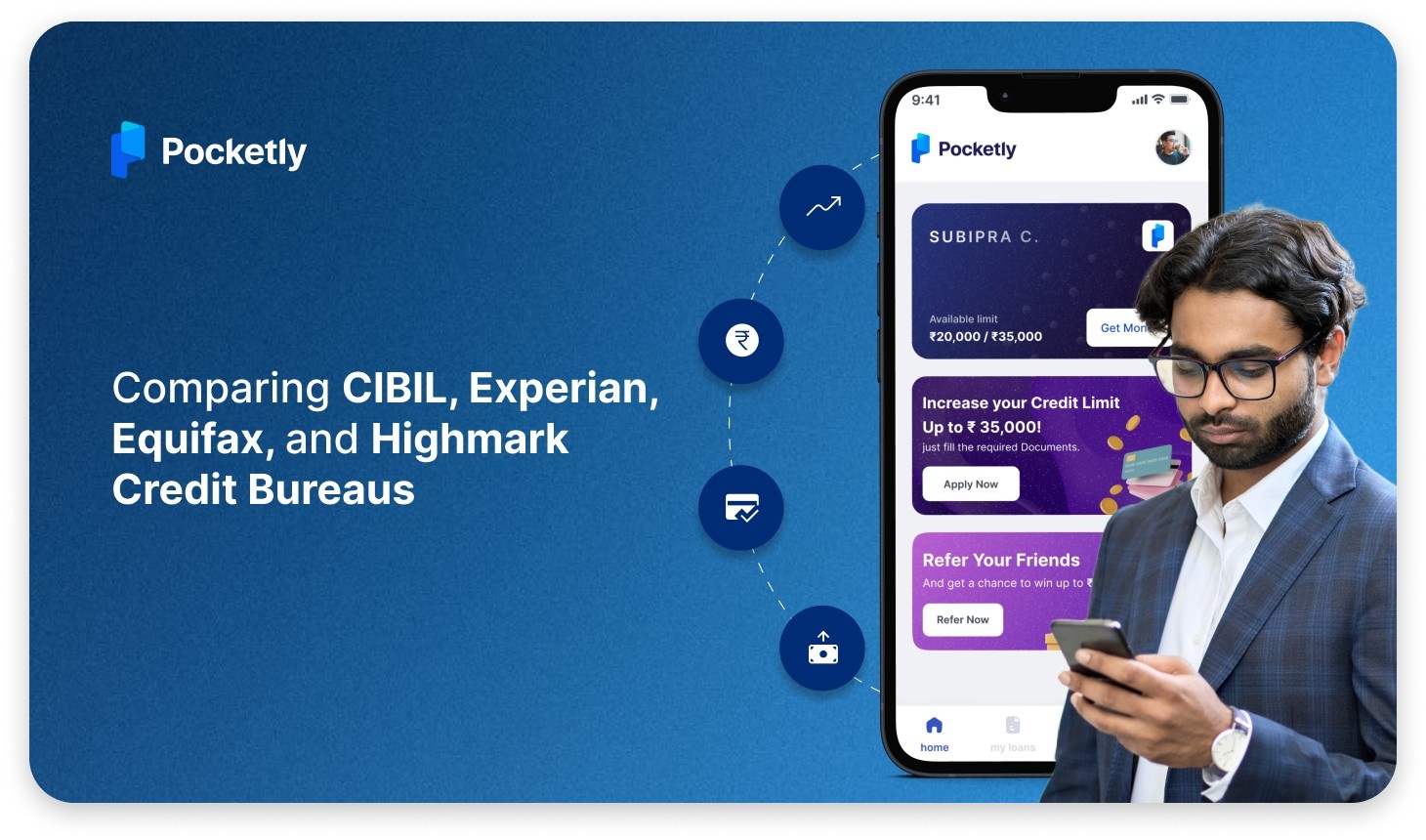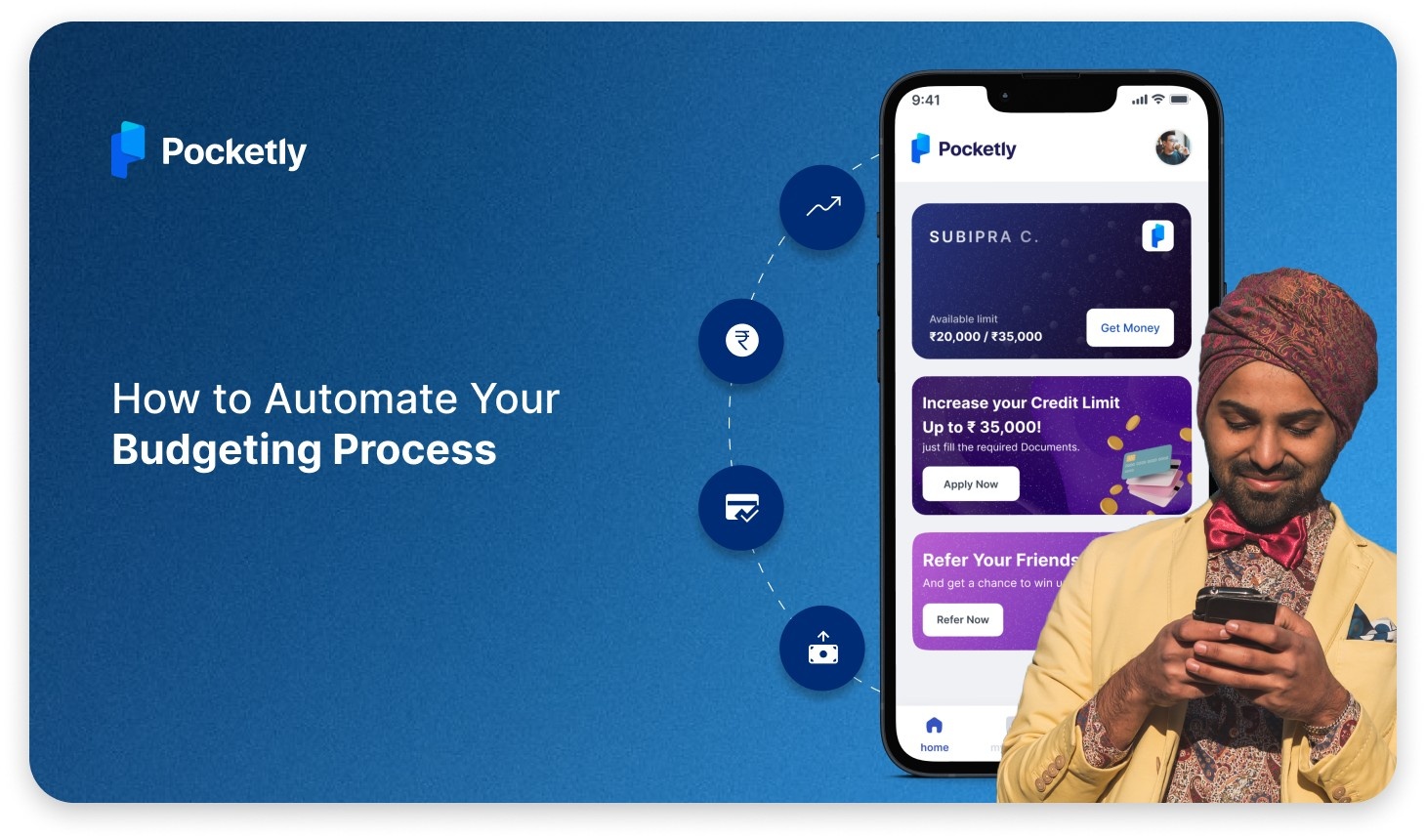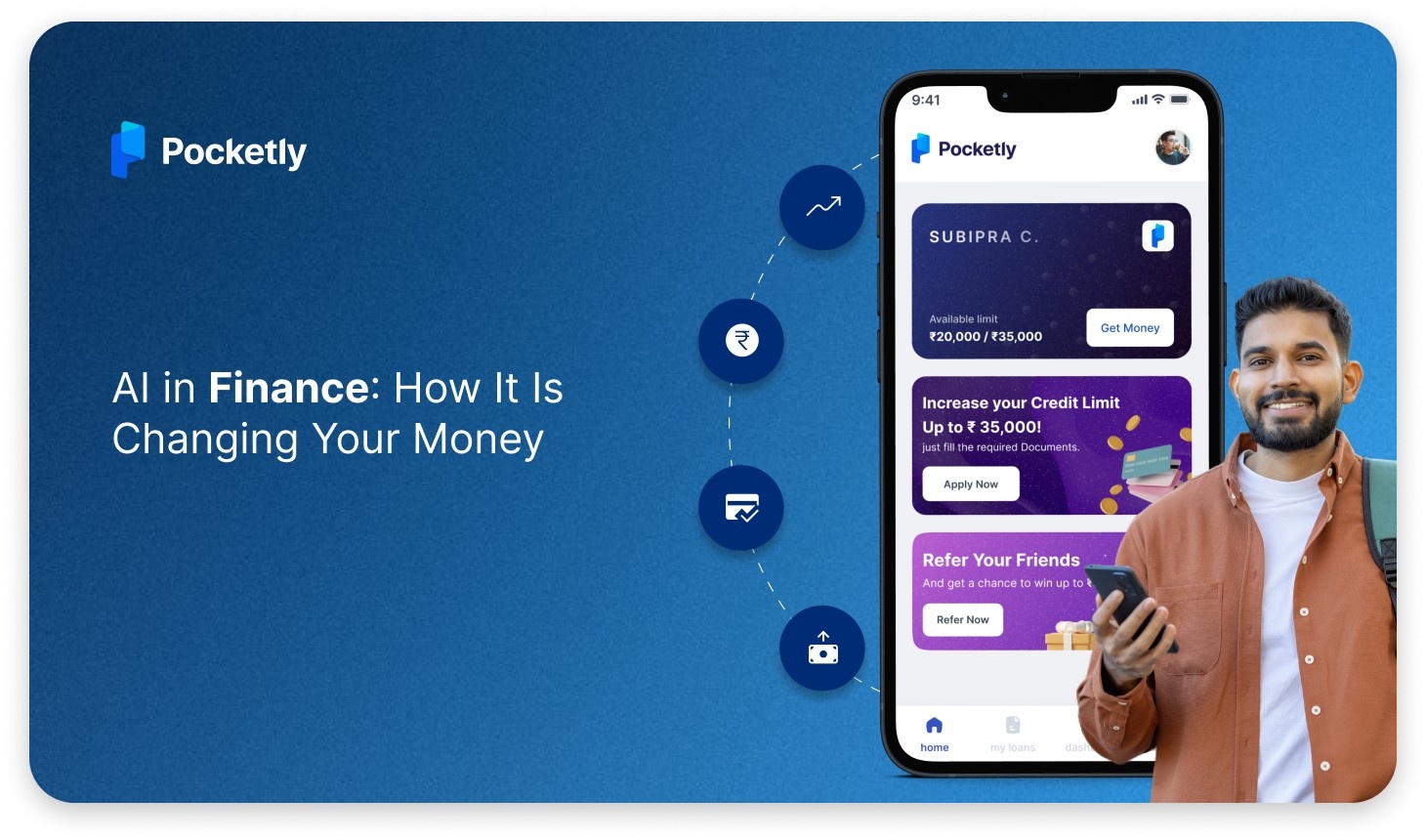
Picture this: you’re a college student in India, juggling tuition fees and the cost of a new laptop, or a young professional facing a sudden medical bill at the end of a tight month. Sound familiar? For many young Indians, financial crunches are a reality. Latest data shows that education loans from banks have increased by 23%, and 45% of young professionals report month-end cash shortages.
That’s where joint personal loans come in, a smart, accessible solution where two or more borrowers share the loan responsibility, unlocking higher amounts and better terms. Whether you’re a student aiming to build credit, a salaried employee needing quick funds, or a budget-conscious individual seeking hassle-free financing, joint personal loans can be a game-changer.
In this blog, we’ll break down the eligibility criteria, benefits, and key considerations to help you apply with confidence and make informed financial choices tailored to your needs.
What Are Joint Personal Loans?
A joint personal loan is a borrowing arrangement where two or more individuals, such as friends, family, or spouses, co-apply and share responsibility for repayment. Both borrowers are equally liable, meaning if one defaults, the other must cover payments.
This type of loan lets borrowers access larger amounts and secure better interest rates because lenders view multiple incomes as a lower risk. With fewer chances of all borrowers defaulting, the loan is more likely to be repaid. For example, two students might take a joint loan to cover college tuition, splitting repayments based on their agreement, easing individual financial strain.
Key Features:
- Higher Loan Amounts: Combined incomes qualify for larger sums.
- Shared Liability: All borrowers are accountable for repayment.
- Better Rates: Stronger combined credit profiles may lower interest rates.
Role and Responsibilities:
- Primary Borrower: The primary borrower initiates the loan application, often with a stronger credit profile, and is the main point of contact for the lender.
- Co-applicant: Shares equal repayment responsibility, contributing income or creditworthiness to strengthen the application.
Potential Co-applicants: Spouses, parents, siblings, or business partners can co-apply, provided they meet lender criteria.
Joint personal loans offer a practical solution for young Indians facing financial crunches. But who qualifies for these loans? Let’s explore the eligibility criteria to help you determine if this option suits your needs.
Eligibility Criteria for Joint Personal Loans
Understanding eligibility for joint personal loans is crucial for students and professionals navigating financial challenges. Lenders in India set specific criteria to ensure borrowers can repay. Here’s what you need to know:
1. Age Requirements
Both applicants must be between 21 and 58 or 60 years of age, depending on the lender.
2. Income Criteria
- Both applicants should have a steady and verifiable source of income.
- Minimum monthly income requirements vary by lender but commonly start from ₹15,000 to ₹25,000 per applicant.
- Lenders assess the combined income to determine repayment capacity.
3. Work Experience
Applicants generally need at least 1 year of continuous work experience, often in the same organization, to qualify.
4. Credit Score
- Both applicants’ credit scores and credit histories are evaluated.
- A good credit score, typically 700 or above, improves chances of approval and better terms.
5. Relationship Between Co-applicants
- Co-applicants can be spouses, family members, business partners, or friends.
- Married couples or immediate family members are often preferred by lenders as lower-risk borrowers.
6. Debt-to-Income Ratio
- Lenders prefer a debt-to-income ratio below 40-50% to ensure the applicants can comfortably manage repayments.
7. Documentation
- Standard KYC documents, proof of income (salary slips, bank statements), age proof, and employment proof are required for both applicants.
Notes:
- Both applicants share equal responsibility for loan repayment.
- Joint loans may offer larger loan amounts, better interest rates, and flexible repayment tenures up to 60 months.
- Some lenders allow co-applicants living in the same city or household, especially for family members.
This summary covers the standard eligibility criteria for joint personal loans in India based on current lending practices. Specific requirements may vary slightly by lender.
Eligibility Checklist:
| Criteria | Requirement |
|---|---|
| Age | 21-60 (18+ for co-borrowers) |
| Income | Stable, min. ₹25,000/month (varies) |
| Credit Score | 700+ preferred |
| Relationship | Family, spouse, or close associate |
| Documents | ID, address, and income proof |
Meeting these criteria can unlock joint personal loans, easing financial burdens for young Indians. So, why choose a joint loan? The benefits make it a compelling option for many.
Read More: Steps in the Personal Loan Application Process
Benefits of Joint Personal Loans for Young Indians
Joint personal loans can be a smart way for young Indians to tackle financial challenges. By combining resources, borrowers can access opportunities that might seem out of reach on their own. Here’s a breakdown of the key benefits:
Access to Higher Loan Amounts
When two or more people apply together, they can qualify for a larger loan. For example, two cousins can pool their money to secure a loan big enough to cover the high fees of professional courses like engineering, something that would be tough to manage individually in India’s competitive education system.
Lower Interest Rates
Applying jointly can also lead to better interest rates. If one borrower has a good credit score, the others can benefit from a reduced rate. For instance, a salaried professional in Mumbai might co-apply with a sibling who has a strong CIBIL score, getting a lower rate and saving a significant amount over the loan’s duration.
Shared Repayment Responsibility
A joint loan means shared responsibility for repayments, which makes the financial burden easier to handle. In cities like Bengaluru, where costs are high, two friends could take a loan to cover a medical emergency and split the repayments, helping them avoid dipping into savings or cutting back on important expenses like family celebrations.
Credit-Building Opportunities
For young people just starting their financial journey, joint loans offer a great chance to build a credit history. For example, a student in Jaipur could co-apply with a parent to buy a laptop for their studies. By making timely repayments, they start building a solid credit score for the future—helpful for getting loans down the line.
Faster Loan Approvals
Lenders see joint applications as less risky because they involve more than one person’s income and credit history. This makes the approval process quicker, which can be helpful when you’re in a rush. Take, for example, a newlywed couple in Delhi who need a loan for their wedding. By applying together, they can secure the funds faster, without stress.
Joint personal loans give young Indians the chance to pursue their goals—whether it’s furthering education, handling medical costs, or funding life’s big moments.
With the added benefits of better loan terms and faster approvals, they can be a smart option for students, professionals, and anyone looking to stay on top of their finances.
That said, it’s important to remember that there are risks involved. As with any financial product, joint loans require careful thought. Understanding these risks will help you make the best decision for your financial future.
Considerations for a Joint Personal Loan
Here’s a look at some of the key considerations for young Indians before signing up for one:
Shared Liability and Default Risk
With joint loans, everyone is equally responsible for repaying the debt. If one person can’t make the payments, the others will have to pick up the slack. For example, let’s say two siblings in Delhi take a joint loan for higher education. If one of them loses their job or faces financial trouble, the other sibling may have to take on the entire repayment. This shared responsibility can put a strain on both finances and relationships.
Impact on Credit Scores
Joint loans affect everyone’s credit score. If the payments are missed or delayed, both borrowers’ credit scores can take a hit. For instance, if a young couple in Bangalore takes out a loan to renovate their home and struggles to pay on time, it will negatively impact both of their scores. This could make it harder for them to get loans in the future, like for a car or a house.
Unequal Contribution and Potential Disputes
In joint loans, it’s common for disagreements to arise if one person isn’t contributing their fair share. Take two friends in Mumbai who take out a loan to start a business. If one friend faces financial trouble and can’t make their part of the payment, the other could feel burdened. This kind of situation can lead to conflicts, which can impact both the relationship and the loan.
Co-Applicant’s Financial Stability
If one of the borrowers faces a setback, like job loss or a medical emergency, it can affect the entire loan. For example, if a young professional in Pune takes out a joint loan with a parent, but the parent falls ill, it can put a strain on their finances. This makes it harder to stay on top of the loan, which could lead to late payments, extra fees, or even legal issues.
Higher Risk in Urban Areas
Living in cities like Mumbai, Bengaluru, or Delhi comes with high living costs, which makes joint loans riskier in these areas. If both borrowers are working in these high-cost cities and one faces a significant income drop, it can be tough to keep up with the repayments.
For example, a couple in Mumbai might take out a loan for their wedding. But if one of them loses their job or faces an unexpected expense, they might struggle to meet their loan obligations, leading to late fees or default.
In the end, joint personal loans can be a great way to achieve financial goals, but they come with shared responsibilities. If one person struggles to pay, it can affect everyone involved.
Clear communication and understanding of each person’s responsibilities are key to making it work. Before committing, make sure everyone is financially stable and on the same page. This way, you can avoid unnecessary stress down the road.
Wondering how to boost your chances of getting approved? Let’s look at ways to improve your joint loan eligibility.
How to Improve Joint Personal Loan Eligibility
Here’s how you and your co-borrower can strengthen your application in India’s competitive lending market.
1. Choose the Right Co-Applicant
The co-applicant’s income and credit score are equally important. Opt for someone with a stable, high income and a good credit score (700+), such as a spouse, parent, sibling, or trusted friend.
Lenders often prefer married couples or immediate family members as co-applicants since they are viewed as lower-risk borrowers than friends or distant relatives.
2. Improve Credit Scores of Both Applicants
Ensure all credit card bills, EMIs, and other dues are paid on time to avoid negative marks on credit reports.
- Reduce credit utilization: Keep credit card utilization below 30% to boost creditworthiness.
- Dispute errors: Regularly check credit reports and dispute any inaccuracies to maintain a clean credit history.
- A strong credit score from both applicants significantly increases the chances of approval and may lead to better interest rates.
3. Increase Combined Income and Savings
Both applicants should work towards increasing their monthly income through salary hikes, part-time jobs, or additional freelance work.
- Higher savings demonstrate financial discipline and improve repayment capacity in the eyes of lenders.
- The combined income is a key factor lenders assess to determine your repayment capacity and loan eligibility.
4. Maintain a Healthy Debt-to-Income Ratio
Pay off or consolidate existing loans and credit card debts to lower your overall debt burden.
- Avoid multiple loan applications: Frequent loan or credit card applications can negatively impact your credit score.
- A lower debt-to-income ratio (preferably below 40-50%) improves eligibility by showing lenders that you can comfortably manage repayments.
5. Opt for a Suitable Loan Amount and Tenure
Request a loan amount that aligns with your combined income and repayment capacity.
- Choose an appropriate tenure: Longer tenures reduce EMIs but increase interest cost; shorter tenures increase EMIs but reduce total interest. Find a balance that suits your financial situation.
- Lenders may require higher income or credit standards for larger loan amounts, so tailor your application accordingly.
6. Provide Complete and Accurate Documentation
Submit all required KYC documents, income proofs (salary slips, bank statements), and employment proofs for both applicants. Incomplete or inconsistent documentation can delay or jeopardize loan approval.
7. Consider Applying Through Lenders Offering Joint Loans
Some lenders specialize in joint personal loans and may offer more flexible eligibility criteria or competitive interest rates for joint applicants. Research and compare offers from banks and NBFCs to find the best fit.
Here is the summary:
| Strategy | Why It Helps |
|---|---|
| Choose a financially strong co-applicant | Combining income and credit strength for better eligibility |
| Improve credit scores | Enhances approval chances and interest rates |
| Increase combined income & savings | Demonstrates repayment capacity |
| Maintain a low debt-to-income ratio | Shows a manageable debt burden |
| Select the appropriate loan amount & tenure | Aligns EMIs with repayment ability |
| Submit complete documentation | Avoids delays and rejections |
| Apply with lenders supporting joint loans | Access to better terms and smoother processing |
Next, let’s explore some practical options and tools available to help you access personal loans efficiently, tailored to the needs of young Indians today.
Read More: Benefits of Paying EMI in Advance Before Due Date
Why Pocketly Makes Sense for Instant Personal Loans
Even after understanding the joint personal loans' details, the process can still feel overwhelming. You might worry about approval time, paperwork, rigid repayment schedules, or urgent financial needs that can't wait.
No worries! Pocketly provides instant personal loans designed specifically for the fast-paced lives of young Indians, offering a quick and hassle-free solution for those unexpected expenses and immediate needs.
Pocketly is designed for young Indians like you, offering a seamless, transparent way to access personal loans without the headaches of traditional banking.
- Pocketly’s lightning-fast approvals mean you can apply in minutes and get funds in your account almost instantly—perfect for covering a sudden medical bill or a course fee.
- Tired of endless paperwork? With minimal KYC requirements, you and your co-borrower only need to upload Aadhaar, PAN, and a selfie online, skipping the piles of documents banks demand.
- Are you worried about rigid repayment schedules? Pocketly offers flexible EMI options, letting you and your co-borrower in Mumbai tailor payments to fit your budget, whether you’re a student or a self-employed entrepreneur.
- Unlike traditional loans, Pocketly requires no collateral, so you don’t have to risk your savings or family assets to fund a laptop or a startup idea.
- Transparency is key—no hidden fees means you’ll know exactly what you’re paying, with interest starting at 2% per month and processing fees of 1–8%.
- Plus, every timely repayment helps you build your credit score, a game-changer for a Jaipur student eyeing future loans or a Pune professional planning a big purchase.
- Pocketly goes beyond lending with financial literacy tools, offering tips to manage money smarter, and round-the-clock support for any questions, day or night.
- Your data? It’s safe with top-tier encryption, giving you peace of mind.
Thanks to its quick processing, digital-first approach, and user-friendly features, Pocketly is an ideal option for anyone seeking an instant personal loan with little hassle.
For more information on how to apply for a personal loan, take a look at our guide, "Steps in the Personal Loan Application Process."
Conclusion
Joint personal loans are a great way to address financial challenges in India, whether you’re a student in Chennai trying to cover tuition fees or a professional in Gurugram managing month-end bills. These loans offer higher amounts, lower rates, and shared responsibilities, all designed to reduce your stress. You can access funds quickly and responsibly by understanding the eligibility criteria, considering the risks, and using Pocketly’s easy platform.
Pocketly makes the whole process easy with instant approvals, minimal paperwork, and clear, straightforward terms. This makes it a top choice for young Indians aged 18-40. Pocketly’s flexible repayment options and no-collateral loans give you full control. Plus, our financial tools help you make better money decisions for the future.
Want tips on managing your loan wisely? Don’t let financial pressure hold you back. Download the Pocketly app today and take the first step toward financial freedom.
FAQs
1. What is the minimum age for a joint personal loan in India?
The minimum age for a joint personal loan varies by lender, but with Pocketly, it’s 18 for both primary borrowers and co-borrowers, aligning with their focus on young Indians. This makes it easier for students to co-apply with a parent or sibling, provided you’re within the 18–40 age range.
2. Can students with no income apply for a joint loan?
Yes, absolutely! If you’re a student with no income, you can still apply for a joint loan by partnering with a co-borrower who has a stable income, like a salaried family member. Pocketly’s platform is student-friendly, to approve loans up to ₹25,000.
3. How does a joint loan affect my credit score?
A joint loan impacts both your and your co-borrower’s CIBIL scores. Timely repayments can boost your score, opening doors to future credit. However, missed payments hurt both scores, so ensure you and your co-borrower communicate clearly.
4. What happens if my co-borrower fails to pay?
If your co-borrower fails to pay, you’re equally liable for the full loan amount. This shared liability means you’d need to cover their share, which could strain your finances. To avoid this, set a clear repayment plan and choose a reliable co-borrower.
5. Are joint loans available from fintech apps in India?
Yes, fintech apps like Pocketly offer joint personal loans tailored for young Indians. Unlike traditional banks, Pocketly provides a digital, hassle-free experience with minimal KYC and instant approvals.
6. How long does it take to get a joint personal loan approved?
Approval times vary, but with Pocketly, it’s lightning-fast, often within minutes. After you and your co-borrower submit KYC and income details online, funds can hit your account almost instantly.


















